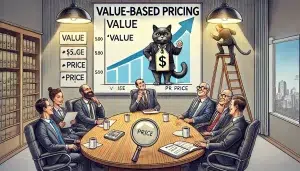
Wholesale price is the amount a retailer pays to purchase products in bulk from manufacturers or distributors. This cost is lower than retail price, allowing businesses to resell items at a profit. Wholesale pricing affects retail markups, profit margins, and overall market competitiveness.
Key Points:
- Lower than retail price
- Difference between wholesale and retail price is called markup
- Markup varies by product type and business strategy
- Vital for pricing strategy in eCommerce and retail
How Wholesale Price Affects Retail Pricing:
- Starting point for setting retail prices
- Influences profit margins
- Considered alongside production costs, overhead, and market demand
- Varies based on target market and price sensitivity
Wholesale Price Strategies in eCommerce:
- Bulk discounts
- Volume purchase deals
- Negotiation with suppliers for better rates
Factors Influencing:
- Production costs
- Overhead expenses
- Market demand
- Target audience
- Competitive landscape
Impact on Business:
- Determines profitability
- Affects competitiveness
- Influences pricing strategy
- Helps attract new customers
FAQs About Wholesale Pricing:
- Q: What’s the difference between wholesale and retail price?
A: Wholesale price is what retailers pay suppliers, while retail price is what consumers pay in stores. - Q: How do I calculate markup?
A: Markup = (Retail Price – Wholesale Price) / Wholesale Price × 100 - Q: Can individuals buy at wholesale prices?
A: Generally, wholesale prices are for businesses, but some suppliers offer bulk purchases to individuals. - Q: How do I find wholesale suppliers?
A: Research online directories, attend trade shows, or use B2B marketplaces. - Q: What’s a typical markup percentage?
A: Markup varies widely by industry, ranging from 20% to 100% or more.
Useful Links:
- Small Business Administration: Pricing Strategy Guide
- Shopify: How to Price a Product
- Investopedia: Wholesale Price Index
- National Association of Wholesaler-Distributors
By understanding wholesale pricing, eCommerce and retail businesses can optimize their pricing strategies, improve profitability, and maintain a competitive edge in the market.




